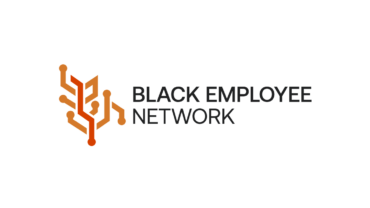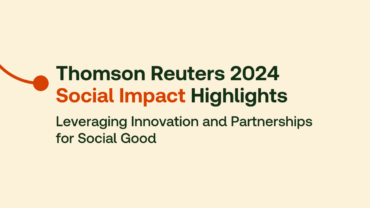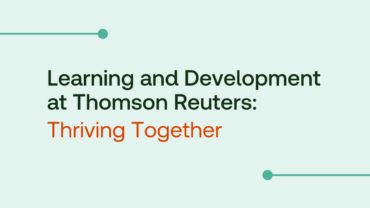Sep 22, 2022 | Our Purpose
Well-being is foundational to the future of work

Nita Cumello, Global Client Director and Director of Well-Being,
Global Large Law – Legal Professionals
For so long, there has been a “fluffiness” associated with well-being. It was once thought of as a problem solved if an organization provided a stipend for the gym or ping pong tables in the office.
However, more companies have started to realize a distinct difference between workplace perks and a culture that supports the thriving and sustainable performance of its people. Now the hard — and fun — part comes: how do organizations adjust, adapt, and transform into those that support thriving teams and the sustainable performance of their people?
Why is well-being so important now?
New technologies have fundamentally transformed how we conduct business and the type of skills needed in the workforce. The nature of work is changing before our eyes, in every industry. Our personal experiences of the world have also changed drastically in the last two and a half years. The impact of a global pandemic has spurred people — across generations — to reevaluate what is important to them. While there are some aspects of life that are returning to a pre-pandemic state, there is little debate that the old status quo is no more.
The future is now and it’s a hybrid, human world.
Business technologies, artificial intelligence (AI) and automation have enabled tremendous increases in productivity. However, they are a source of burnout, straining much-needed human skills like empathy, communication, and focus. More than half of the global workforce is suffering burnout, according to a recent McKinsey study. If what is needed for the future is dependent on healthy minds, we cannot ignore the foundational significance of mental health and well-being on the future of work.
We are amid a societal re-think that there may be better ways to work and live. Organizations that embrace this notion of rethinking to optimize and empower their people will be positioned to not only endure, but to thrive.
How do organizations start on the path to employee well-being?
We spend most of our waking hours in our working environment, whether in person or remote. The culture of the workplace plays a significant role in how we feel about the work we do. Culture does not live in the walls of the building, but in the hearts and minds of the people, their lived experience, and how they meaningfully contribute to their teams, their organization, and the world around them. As we transform into healthier organizations, we must think about what contributes to culture holistically. This spans from the individual, to teams, and more broadly across the organization.
What we know is that we don’t know everything — there are problems we do not yet know exist, and the skill sets required to address those problems are quite different than they were even a few years ago. Organizations need to begin to foster environments where people can explore what they are great at, nurture their resilience, and encourage lifelong upskilling and reskilling — the effect of which will be a massive return on engagement, connection, and happiness individually, on teams and throughout the organization.
How is individual and team well-being created?
Individuals should be empowered to flourish based on their needs, their values, and their purpose. Support at the individual level means acknowledging that overall health is an output of many different inputs. Empowered well-being includes physical, psychological, and social elements. All these dimensions impact and influence one another and encompass an individual’s mental and overall health. For example, one cannot have optimal physical health without mental and emotional well-being.
A pillar of the well-being strategy of an organization should include support to build literacy around mental health. People want to be better with their own mental health, but they need support to understand all the components and be armed with ways to manage and measure their individual needs.
While well-being may be grounded in different activities for different people, it has a common effect on everyone. A variety of initiatives with support from leadership and an army of champions can start to curate a culture with mental health and well-being as a solid foundation.
But the onus of thriving should not be placed solely upon the individual. Teams are most powerful when connected and when they can leverage their individual and collective capabilities authentically.
Managers and direct supervisors play a critical role in facilitating psychological safety. This refers to a shared belief that the team is a safe place to take interpersonal risks, including sharing ideas, making mistakes, and disagreeing. It is a sense that people can be themselves without fear of rejection or retribution. Psychological safety is a key ingredient of a positive, inclusive, and high-performing team climate that promotes engagement, knowledge sharing, organizational commitment, and creativity — all critical to a thriving and sustainable future.
A culture of well-being starts with leadership
As leaders of organizations seek to increase customer satisfaction, brand, reputation, and innovation, it is imperative that they harness and invest in the mental and overall health of their greatest asset: their people. This extends beyond individual support and into the realm of designing well-being into work itself and to consider it as important as any factor impacting the bottom line. It starts with the lived experience of the individuals and teams who make up the organization.
Leaders now have the responsibility and, arguably, accountability of understanding the factors that contribute to well-being in the workplace. This will require collecting new data and insights that form baselines and benchmarks upon which organizations can begin to take actionable steps toward improvement and evolution.
The ephemeral and evolving nature of our current environment requires making informed decisions regarding how to support better ways of working for people and clients based on relevant and critical data. It equally requires supporting better and more efficient ways to harmonize life and work through effective and efficient use of technology that promotes connectedness, collaboration, and integration.
To position our organizations for growth and success over the long term, we must transform into human-centered businesses that embrace humanity, unpredictable life forces, and the increasing pace of change in our future environment.
To do this well, we must be well.


